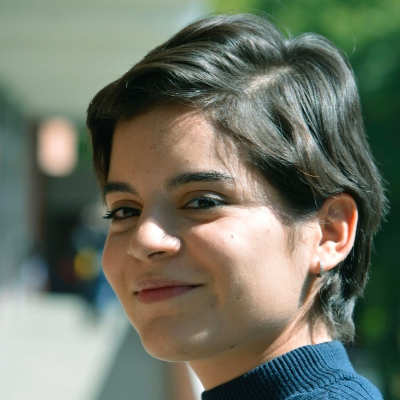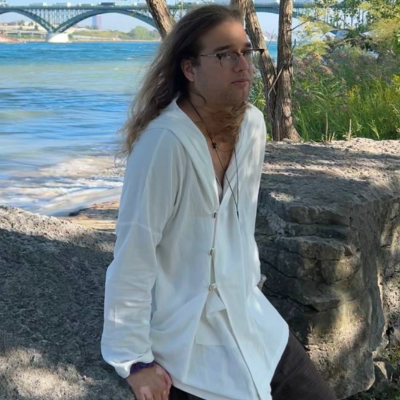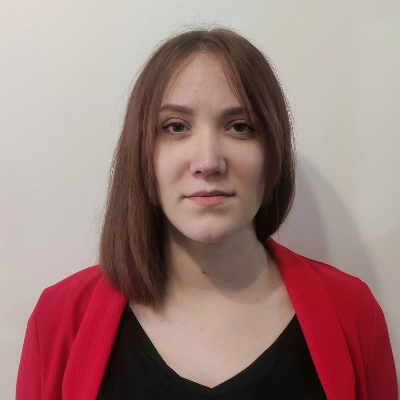The European Renaissance
Homework Help & Tutoring
We offer an array of different online The European Renaissance tutors, all of whom are advanced in their fields and highly qualified to instruct you.
The European Renaissance
The European Renaissance - a turning point in history?
The European Renaissance marks a turning point in history effecting changes in the style of living from the latter part of the fourteenth century, which had reverberations throughout the succeeding ages. Essentially, the Renaissance was the rebirth of classical antiquity: the rediscovery of a forgotten style of art, architecture and sculpture, as well as the works of literature by the great thinkers of Ancient Greece and Rome, and these were used as the foundation for new developments in these fields. A major consequence of the Renaissance period was the establishment of Humanism, an intellectual movement affecting not only education—both artistic and scientific—but also man’s perceptions of religion, resulting in a new set of moral values. Synonymous with this period of change was a new confidence in the use of the vernacular in literature, which enabled greater diffusion of translations of classical works. Patronage and a new sense of civic pride encouraged fresh dimensions and developments in artistic fields, and art achieved new prominence in the life of the individual and the community.
One idea prevalent in the Middle Ages and adopted by some historians is that the term ‘Renaissance’ is almost a malapropism, because scholars of that era saw their cultural achievements as an extension of Roman culture, the intervening centuries showing a natural progression of ideas. Thereby, they argued, without a loss or ‘death’ of pre-existing ideas, there could be no ‘rebirth’, but only a continuation of Roman classicism. These scholars were willing to acknowledge that the culmination of ideas denoted a new era in history, which they preferred to term ‘The New age’, but were unwilling to dismiss the preceding centuries as ‘the age of paganism’ in which little of great significance occurred. Many historians took the contrary view, of course, which makes the subject worthy of closer investigation.
The most important developments of the Renaissance took place in Northern and Central Italy, where money had accumulated through trade, seafaring banking and taxation, and wealthy families such as the Medicis felt sufficient admiration for the classical styles to finance the restoration of its superior techniques. This invited an individual development of the arts. During the Middle Ages, painting, sculpting and architecture had been considered as crafts; trade guilds requiring works of art resorted to standard pattern books to instruct the craftsmen they employed. During the Renaissance, a chance occurred which was particularly noticeable in Florence. Wealthy bankers and traders chose to adorn their fine, new houses with portraits and sculptures. The houses they built were designed less for strength (the earlier priority) and more for beauty. In Florence in 1490, Lorenzo de Medici turned one of his country houses into a villa, taking his ideas from a Greek temple.
Gardens were laid out in classical styles. Flower beds and paths were used to form regular patterns with flowering trees and statues thoughtfully placed for their artistic effect. Clearly a fresh regard for classical styles influenced the new aspirations and these were not isolated preferences. A new civic pride emerged. Public buildings were influenced by this new partiality. Competition was introduced to achieve superior results. In 1402 in Florence, a goldsmith, Lorenzo Ghiberti, won the competition to design a set of panelled, bronze doors for the Baptistery. Prominent artists such as Donatello and Uccello served in Ghiberti’s studio.
Many new houses and churches were modelled largely on the architecture of Classical Rome, with a move away from the previously prevalent tall, narrow towers, spires and pinnacles, the pointed arches and narrow, stained-glass windows. Rounded arches were developed enabling broader windows to afford better lighting for the interiors. Brunelleschi examined classical architecture and applied its style to his knowledge of mathematics to achieve a correct design for the great dome of Florence Cathedral, on which building had come to a halt for want of knowledge of the correct technique for its impressive scale. Symmetry and proportion, therefore, became vital attributes of architecture with superior results. Ghiberti’s apprentice, Donatello, was commissioned in 1443 to produce a bronze monument to condottiere Gattamelata on horseback. Bronze casting on this scale had been untried since Roman times. In 1504, Pope Julius II instructed Michelangelo to make a vast tomb with 40 large figures, although its scale was never actually realized.
The artists of Venice began to experiment with vivid colours, while in Florence, mathematical rules began to be applied. As early as 1300, Giotto began to break away from the Byzantine influence of predominantly religious painting with its characteristic weakness of proportion and distance. Giotto was concerned with realistic, solid depiction of figures and background. By the beginning of the fifteenth century, this style had become widespread amongst painters as more knowledge of classical rules for proportion and perspective became available. Masaccio experimented with light and shade (chiaroscuro) and Uccello further developed perspective by experimenting with unusual angles. Verrocchio’s work showed new attention to linear detail. Religious subjects remained common, but were treated to a new dimension and the works of Leonardo da Vinci and Michelangelo are lasting evidence of the artistic excellence aspired to in this era.
Sculpture escaped the confines of the niche and this was not merely a natural progression in art, but inspired by a personal sense of achievement as Renaissance man began to feel the value of his individual attainments. It was an era of monumentality, a yearning for eternal memory of man’s achievements. The Renaissance tomb combined superior examples of sculpture and decorative art. Nudity was a daring development in Renaissance art, requiring expert depiction of anatomy. Leonardo da Vinci’s desire for perfect depiction led him to detailed study of nature and human anatomy to produce realism and proportion. Brunelleschi and Donatello measured the remains of ancient buildings to improve their work. Art was transformed by this reference to antiquity and nature to achieve the verisimilitude the artists required of themselves. The equestrian figure and the portrait bust became artistic milestones of the Renaissance period, but perhaps the paramount development was the rise of the free-standing statue. All these made for greater realism in art than had hitherto existed and signified the new commercial and secular influence on art. The results outclassed all previous artistic achievements, and laid impressive foundations for the reference of subsequent artists.
The revival of classical literature marked another significant turning point of the Renaissance. The popularisation of the vernacular increased the significance of classical literature by bringing the works of the great thinkers of antiquity within the reach of many. There had always been an elitist demand for the best books, but many of these were inaccessible, not only by being secreted away in monasteries, but also by being written in Latin or Greek. Petrarch and Boccaccio created a new acceptance of the use of Italian in literature. In 1402-3 Poggio Bracciolini introduced the Italic script – clear, rounded and said to be modelled on Petrarch’s hand. This was a great improvement on the previous cramped, angular Gothic hand and was the script that went into printing. A fascination for the ancient literature led such people as Pope Nicholas V, Cardinal Bessarion and Venetian publisher, Aldus Manutis to arrange for agents to hunt out ancient manuscripts far away from Italy. A broad spectrum of the educated public waited eagerly for knowledge of these discoveries. In historian, M.P. Gilmore’s1 words: “If the ability to read had remained a prerogative of the clergy, it is doubtful that any technical innovation would have been accepted, or applied”.
Translators were in great demand to put Latin and Greek into the Italian language, and many of these were men who had fled to Italy after the capture of Constantinople in 1453. In the 1450s, printing from metal type spread to Italy from Germany, enabling books to be produced more quickly and cheaply than previously, when these had to be copied out by hand. Book learning, therefore, extended to the not so wealthy and non-churchman, contributing to the ‘secularization of wisdom’.
Humanism, ‘the mystical ideal of human nobility’ played a significant role here. This was a view in harmony more with the ancients than the corporate-minded man of the Middle Ages. Humanism was an intellectual movement orientated both towards study and towards life. Coluccio Salutati enhanced the reputation and esteem of the elegant style of learning that became the humanists’ training. He himself achieved the office of Chancellor and gained such admiration in the execution of the duties of his office as to become a cultural inspiration to younger men.
By the first half of the fifteenth century, the studia humanitatis had come to denote the scholarly disciplines of grammar, rhetoric, history, poetry and moral philosophy. The curriculum included reading and interpreting the standard ancient writers in Latin and also Greek. The humanists propagated a new view of man, emphasising dignity, liberty and active citizenship. Rhetoric was considered an important art, providing good training for the political life. With such a background, humanists became important public figures (Chancellor, Diplomat, Secretary) to whom the formulation of political documents was entrusted for their grounding in Latin. As official historians (such as Bruni and Guicciardini), they advised on the past, doing this in a newly critical and analytical fashion. Bruni turned the study of history into a serious science. They were realistic and politically and psychologically competent. They did not belong to the ruling classes, but were invaluable to their social and political superiors – for example: with the establishment of the Gross Consiglio in Florence in 1494, middle class groups who had previously had no influence, now gained the right to participate in Government. The aristocrats, opposing this scheme, used the humanists as go-betweens to argue their case for the continuation of the aristocratic regime.
The important events of the times (e.g. the conquest of Pisa in 1406) and the achievements of individuals were an incitement to record history as had not been the case before, and none was better qualified for this task than the humanist scholar. In addition, his particular knowledge made the humanist useful as artistic adviser between artists and their patrons.
The humanist movement had its effects on philosophy and religion too. The ideas of the Greeks and Romans were regarded seriously and the humanists brought about an intellectual movement away from theology and into ethics. There was evidence of a growing disenchantment with religion after the return of the Popes to Rome and the subsequent elections of Urban VI and Clement VII in 1378, resulting in the Great Schism and heralding a new era of courtly power and influence. Old ideas were weakening and the humanists helped to provide a new structure for this feeling of dissatisfaction. Like Aristotle, the humanists believed man to be a political animal who should give preference to the active life over the contemplative (as advocated in the Middle Ages, when education had been the privilege of the clergy). To the humanists, religion became man-centred. They adapted Plato’s works to Christianity and the subsequent rise of Neoplatonism emphasised the conflict between established religion and philosophy.
Humanism, therefore, had great significance on Renaissance life, growing from seeds of interest in the ancients and the civic idea, to new measures of individualism, realism and a closer understanding of man, his politics and history. They brought a new framework of reference into circulation. Science benefitted from this concept of ‘New Rationalism’. Time took on a new relevance, cartography became a serious study, and detailed maps were produced for safer trade routes. Leonardo da Vinci, aided by the knowledge of humanist achievement, made inroads in developing sciences like engineering, anatomy and palaeontology. The Renaissance period, in short, was the precursor of modern scientific specialization.
The Humanist Movement and its achievements was an integral part of the Renaissance and this was not a period witnessing a vaguely interrelated series of developments as the culmination of prior achievements, but a definite turning point in history, heralding change and advancement, chiefly in the arts, but also in religious, scientific and intellectual thought, which was to lay solid foundations for the succeeding ages.
To fulfill our tutoring mission of online education, our college homework help and online tutoring centers are standing by 24/7, ready to assist college students who need homework help with all aspects of your history study. Our history tutors can help with all your projects, large or small, and we challenge you to find better online European Renaissance history tutoring anywhere.
1. Gilmore, M.P. The World of Humanism 1453-1517 – Harper Torchbooks (1952)
Some suggested further reading:
Burke, P. The Renaissance - Palgrave; 2nd Edition (1997)
Hay, D., The Italian Renaissance in its Historical Background (The Wiles Lectures) Paperback (1977)
Davis N. Europe: A History - Harper Perennial 1998
Trevor-Roper, H., The Rise of Christian Europe - Thames And Hudson; 2nd revised Edition (1966)
College The European Renaissance Homework Help
Since we have tutors in all The European Renaissance related topics, we can provide a range of different services. Our online The European Renaissance tutors will:
- Provide specific insight for homework assignments.
- Review broad conceptual ideas and chapters.
- Simplify complex topics into digestible pieces of information.
- Answer any The European Renaissance related questions.
- Tailor instruction to fit your style of learning.
With these capabilities, our college The European Renaissance tutors will give you the tools you need to gain a comprehensive knowledge of The European Renaissance you can use in future courses.
24HourAnswers Online The European Renaissance Tutors
Our tutors are just as dedicated to your success in class as you are, so they are available around the clock to assist you with questions, homework, exam preparation and any The European Renaissance related assignments you need extra help completing.
In addition to gaining access to highly qualified tutors, you'll also strengthen your confidence level in the classroom when you work with us. This newfound confidence will allow you to apply your The European Renaissance knowledge in future courses and keep your education progressing smoothly.
Because our college The European Renaissance tutors are fully remote, seeking their help is easy. Rather than spend valuable time trying to find a local The European Renaissance tutor you can trust, just call on our tutors whenever you need them without any conflicting schedules getting in the way.





